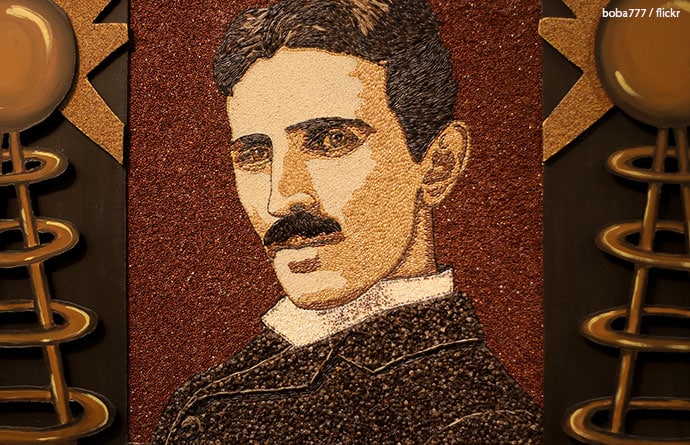
- Tips for Moving Home and the Geniuses Behind Them
- # 1 Declutter Before Moving Home
- Who Invented Decluttering?
- #2 Pack Fragile Items in Bubble Wrap®
- Who Invented Bubble Wrap®?
- #3 Pack Using the Russian Doll Method
- Who Invented Russian Dolls?
- #4 Use Plastic Tote Boxes for Moving Home
- Who Invented Plastic Tote Boxes?
- #5 Move Heavy and Large Furniture with a Shoulder Dolly
- Who Invented the Shoulder Dolly?
- #6 Hire a Van with a Tail Lift
- Who Invented the Tail-Lift?
- #7 Pack a Moving Day Essentials Box
- Who Invented Deep Heat Muscle Rub?
- #8 Protect Your TV with a Bicycle Box
- Who Invented the Cardboard Box?
- #9 Hire a Full-Service Removal Company
- Which was the First Removal Company in the UK?
- Bonus Moving Tip
Do you ever just stop and wonder, ‘Who came up with that idea?’
If you are in the process of relocating, then it is unlikely you have the time to idly gaze off into space and contemplate the wonders of the universe, or more precisely, the wonders of packing and moving home.
But we have, we have looked at 9 of the most genius home moving tips, why they will make your home move so much easier or cheaper, and then we sought to find out how those moving tips came about.
Tips for Moving Home and the Geniuses Behind Them
# 1 Declutter Before Moving Home
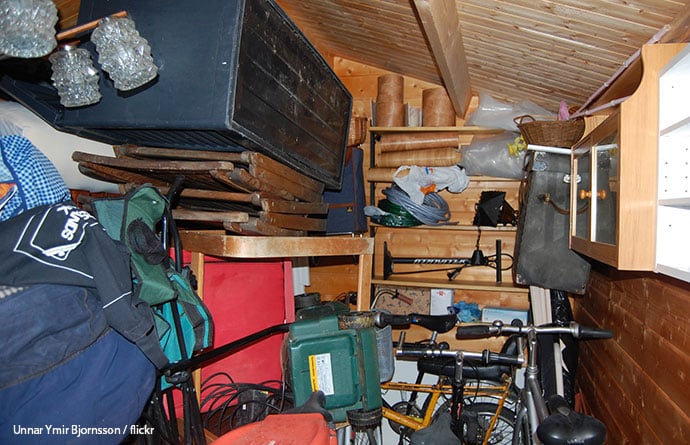
There are so many benefits to decluttering your home, especially if you are about to pack and move.
Decluttering is where you remove all the things from your life that you do not truly need or love.
That may mean giving your things away, recycling, or selling them so that you are left with only essential and practical items and the things that bring you real joy.
The result is fewer possessions cluttering up your home, fewer things to get broken or go wrong, and, essentially, having a tidy home is relaxing; it instills a sense of calm and serenity.
Also, crucially, it is the one guaranteed way to make your home move cheaper, quicker, and easier.
Who Invented Decluttering?
When you mention decluttering, Mari Kondo is the name and method that would probably spring to mind.
But the concept of living a less cluttered life goes back centuries, in fact right back to the time of Buddha, who said ‘The less you have, the less you have to worry about’.
Apply that to your life. The fewer things you own, the less cleaning you have to do, the more space you have in your home, and the fewer things you have to search through to find the one thing you actually need.
You may also like to read these guides, which go into both the easiest ways to declutter and also how to cope with the emotional aspect of parting with your possessions.
- The Epic Guide to Decluttering for a Home Move
- How to Declutter Your Loft
- When, Why, and How to Declutter Your Elderly Parents’ Home
#2 Pack Fragile Items in Bubble Wrap®
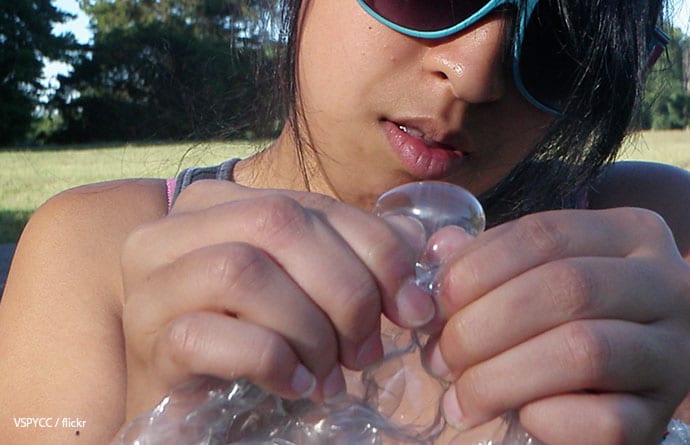
Bubble wrap® is the go-to packing material to give your precious and valuable possessions ultimate protection during your home move.
The air pockets create a cushion between any impact and the object, preventing any damage from being caused.
Bubble wrap® can also be used to fill any gaps in your moving boxes, preventing the contents from moving about inside the box and getting damaged.
Who Invented Bubble Wrap®?
Alfred Fielding and Marc Chavannes originally heat-sealed two shower curtains together to produce a textured wallpaper back in 1957. Although the concept never caught on, when they decided in 1960 to market the product as a packaging material, they founded Sealed Air Corp with Bubble Wrap® being their signature brand, and a legend was born.
You may also like to read: How to Pack Fragile Items for Moving Home. This is a comprehensive guide to packing all those fragile items around the home, including those odd and awkward-shaped things.
#3 Pack Using the Russian Doll Method

To make the most efficient use of the space available to you in your packing crates and the removal van, utilise the Russian doll method of packing.
Without making the crates too heavy to lift, pack things inside each other.
For example, you could pack spices or open packets of ingredients inside a lidded saucepan. If you are taking suitcases with you, then pack a few books or clothing inside them.
The idea is to make use of every available bit of space in each packing crate; the fewer crates you fill, the quicker it will take to load and unload, which will save you some money if you are paying your removal team by the hour.
Who Invented Russian Dolls?
Matryoshka dolls, or Russian dolls, were designed by Sergey Malyutin and crafted by Vasily Zvyozdochkin in 1890. First shown at the Children’s Education Workshop in Savva Mamntov, the set consisted of eight dolls that nestled inside of each other. In 1900, the dolls were presented at the Exposition Universelle in Paris, where they won a Bronze Medal.
You may also like to read: 12 Space Saving Packing Tips for a Cheaper Home Move. Discover 12 easy ways to save space when packing for your home move to make it cheaper, easier, and quicker.
#4 Use Plastic Tote Boxes for Moving Home
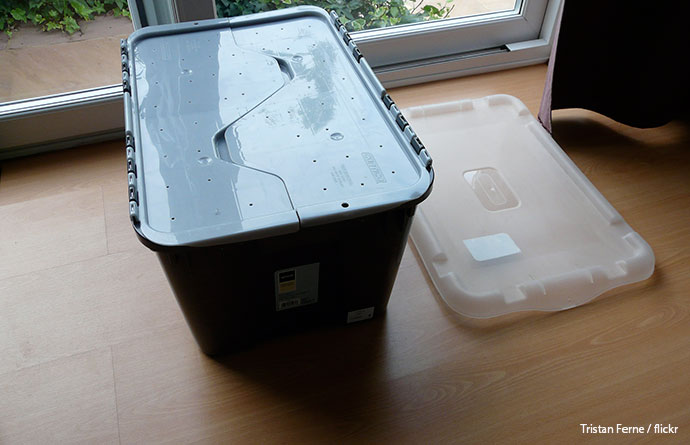
Plastic tote boxes are the modern equivalent of cardboard boxes, but with some distinct advantages.
Packing for a home move using plastic crates is significantly quicker and cheaper than having to construct cardboard boxes.
They are uniform in shape, so they make efficient use of the space on the removal van, and because of their rigidity, they stack safely
Additionally, they will protect your items from bad weather and are not prone to deterioration over time when used for storage.
Who Invented Plastic Tote Boxes?
Most plastic tote boxes are made from polyethylene, which was invented by J Paul Hogan and Robert L Banks in 1951.
You may also like to read: Alternative Packing Materials for Moving Home. In this guide, we find out whether plastic totes or cardboard boxes are better. We also look at things around your home that could be used for packing materials, and finally, at eco-friendly packing materials.
#5 Move Heavy and Large Furniture with a Shoulder Dolly
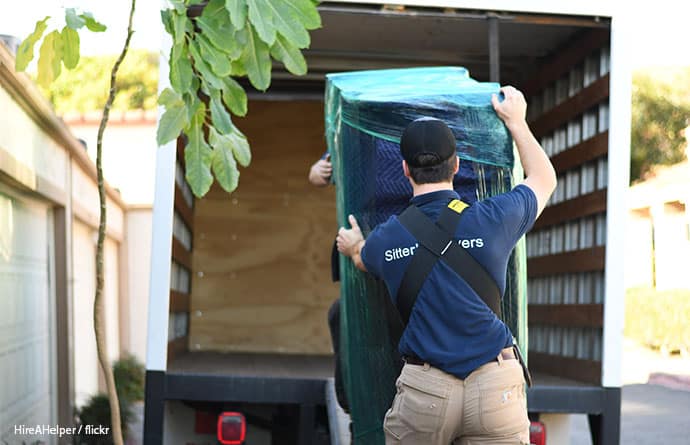
If you are moving home without hiring a professional furniture removal company, then an invaluable piece of equipment is the shoulder dolly.
Also known as lifting straps, moving straps, or furniture moving straps, these are a harness that fits over your shoulders and around your hips to distribute the weight of lifting a heavy item more evenly, thus helping to prevent back injuries.
It will require two people to use this method to move a heavy object.
They can usually be hired from your local tool-hire shop or from local removal companies.
Who Invented the Shoulder Dolly?
In 2002, Thomas E Dent invented the shoulder dolly, having worked in the summer holidays delivering appliances. He used a cut-up jacket with straps sewn into it to lift the heavy appliances and help prevent injury to his back.
Over the next couple of years, he perfected his design and in 2004 launched the Shoulder Dolly.
Must read: How to Move Heavy Furniture. This is an essential guide on how to safely and easily move heavy and large pieces of furniture.
#6 Hire a Van with a Tail Lift
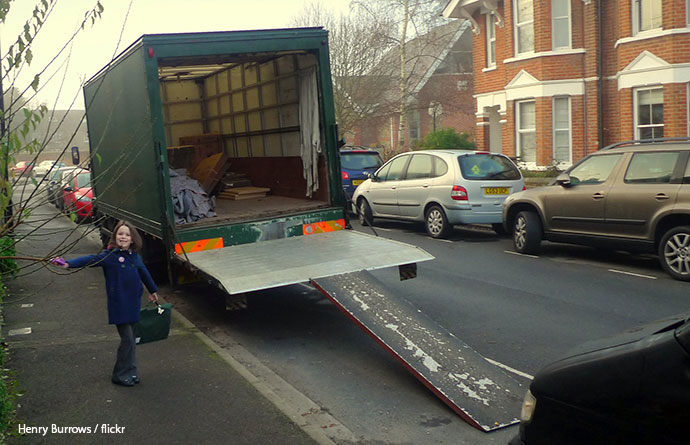
One of the essential features of the van you are hiring for a self-move is that it should have a tail lift.
Not only will it make loading heavy or large appliances and pieces of furniture easier, but it is also far safer than trying to lift said objects onto the back of a van.
It may be slightly more expensive to hire a van with a tail lift, but your back will thank you.
The risk with using a tail lift is that you may fall from it, so take extreme care when loading a van using a tail lift.
Who Invented the Tail-Lift?
The initial idea came from a service manager at a Ford garage named Frank Novotney, who worked with William C Anthony of Peoria, Illinois, on the idea back in 1939.
The trademark ‘liftgate’ was trademarked in 1941.
You may also like to read: Self-Drive Removal Vans – All You Need to Know. This is an essential guide that contains everything you need to know about hiring a rental van for your home move. From the size of the van you need, to which driving licence you should have, this guide is packed with useful information.
#7 Pack a Moving Day Essentials Box

A moving day essentials box, also known as an open-me-first box, contains all the essential items you are going to need on moving day and the first night in your new home.
It should contain any irreplaceable items as well as things like important paperwork, medication, food, and drink.
You may choose to pack a box for each member of the family, depending on your individual needs.
After a day of carrying heavy boxes up and down stairs, and moving heavy and large pieces of furniture into your new place, you can be sure that your muscles are going to hurt.
An essential item to have in your moving day essentials box is a tube of muscle rub.
Who Invented Deep Heat Muscle Rub?
Deep Heat is the UK’s number 1 muscle rub ointment.
The original makers, The Mentholatum Company Inc. were founded in Kansas, USA in 1889.
Within 4 years, they had developed what came to be known as Deep Heat.
You may like to read: How to Prepare Your Open First Box. Moving day essentials box, open me first box, whatever you wish to call it, it is a must-have on moving day. In this guide, we offer some suggestions as to what yours may contain.
#8 Protect Your TV with a Bicycle Box

Your television is one of the most likely items to be damaged during a home move.
Ideally, you should pack it in the manufacturer’s original box to give it maximum protection.
Another option is that you could buy a packing box that is specifically made for protecting your television, although these can be very expensive.
The alternative is to wrap the television in multiple layers of bubble wrap®. Place a protective cardboard sheet across the screen (on top of the bubble wrap® so that the screen does not get damaged), then wrap the entire thing in blankets or more bubble wrap®.
Insert the complete package into a bicycle box. You can often pick these up for free from places like Halfords or your local bike shop. They are big and sturdy and will offer great protection to your television.
Ensure the TV cannot move about inside the box by packing any gaps with blankets or bubble wrap®.
Who Invented the Cardboard Box?
The original cardboard box, which was made from paperboard and was just a rigid box, was created by M Treverton & Son in England in 1817, but it was not until 1870 that Robert Gair, a printer in Brooklyn, accidentally cut cardboard rather than folding it. This led to the cutting folding method, which resulted in the flat-pack cardboard boxes we know today.
You may also like to read: How to Pack a TV when Moving Home. A step-by-step guide to packing a television to give it maximum protection during your home move.
#9 Hire a Full-Service Removal Company

Nothing will make your home move easier and less stressful than hiring a really good removal company.
Whilst the initial cost may seem high when you consider how much stress, inconvenience, and time you will save, the cost is extremely good value for money.
Which was the First Removal Company in the UK?
Pickfords was established as a carrier in 1646 and is now the UK’s largest moving and storage company.
Must read: How to Pick a Good Removal Company: The Ultimate Step-By-Step Guide. An essential guide on choosing the best removal company for your home move. We take you step by step through each stage of the process to ensure you pick the right removal company.
Bonus Moving Tip
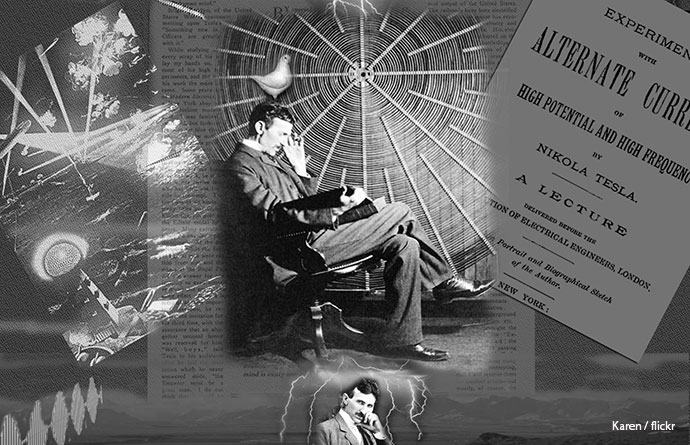
Any article about geniuses would not be complete without mentioning Nikola Tesla.
Tesla is believed to have once said, “If you only knew the magnificence of the 3, 6, and 9, then you would have a key to the universe.”
How incredibly accurate that statement is – and here’s why:
0800 086 9039 is the number you need to ring to get free quotes for your home move from some of the best removal firms in the UK.
You will note that every digit in that telephone number was foretold by Tesla to be the key to the universe.
Where does the number 8 fit in with Tesla’s statement, I hear you cry?
Well, 6/3+9-3=8
Genius.



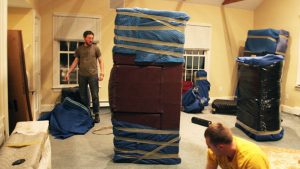
Share your thoughts by leaving a comment